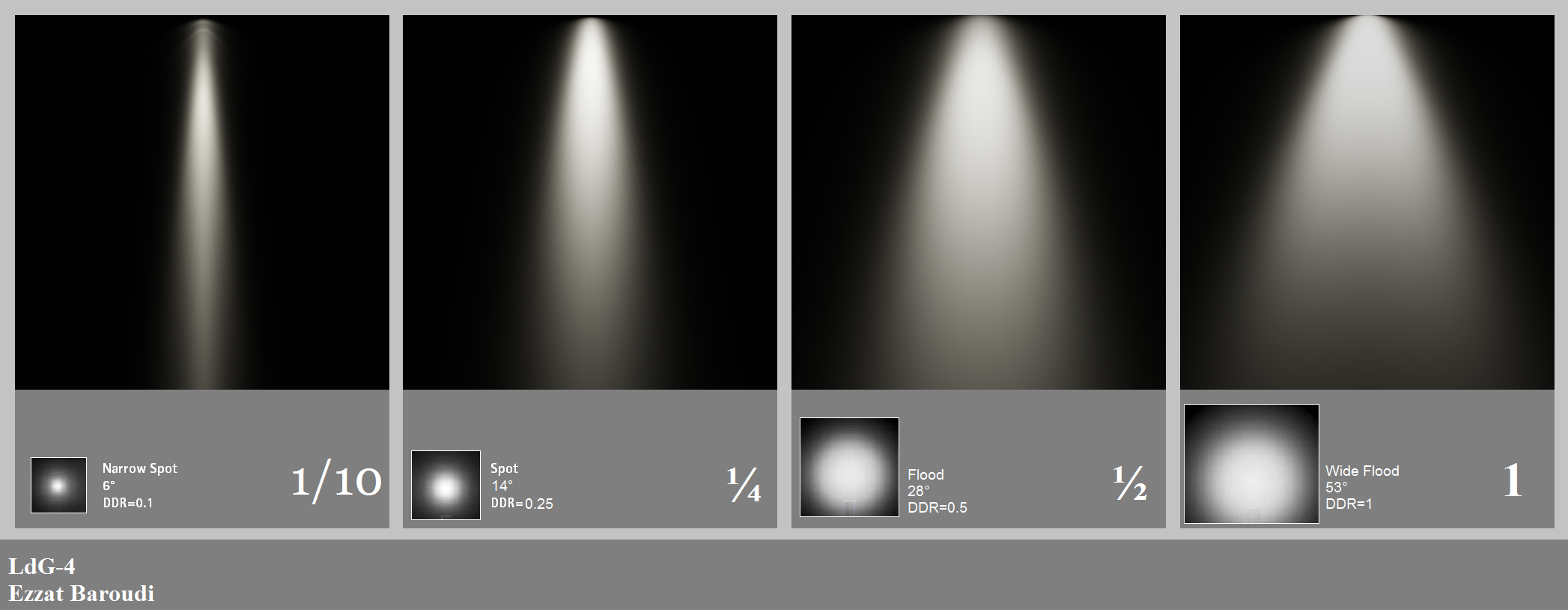Out of all of the phone calls I get from fellow tech folks, the most common question I get is, “I’m looking into LED, how do I choose the right LED fixture?” It’s a simple question that unfortunately is nebulous and doesn’t have a simple answer at all. As should be the case before you make any technical purchase, the question that needs to be answered is what you’re trying to accomplish with that fixture. Depending on your goal, beam size, brightness, form factor and color rendering are all critical factors to consider when choosing a fixture. Most of those are fairly straight forward aspects, but beam size often takes some explanation, so today we’ll break that down for you and help you choose the right LED fixture.
LED Fixture Factor 1: How will it be used?
Before you worry too much about the numbers, it’s more important to understand what you hope to light with the fixture, and from what vantage point you’ll be lighting it from. A fixture with a narrow beam angle is ideal to light a person or surface without having much light bleed. It also is critical in order to light a 9-10’ area from 50+ feet away. If you have a 15’ ceiling however, and want to top light your band, you’re going to likely want as much beam width as you can possibly get.
If you aren’t using the LED fixture as a key light, and instead as an accent in a set design, that’s going to be a completely different vantage point. Knowing how you will use the LED will be the first key factor to knowing what fixture to purchase or rent.
[bctt tweet=”A fixture with a narrow beam is ideal to light a person without having light bleed.” username=”SALT_community”]
LED Fixture Factor 2: What’s the angle?
The angle at which you are lighting things really matters too. Most LED PAR style fixtures have a fairly even beam spread over the whole fixture, giving it a conical shape to the beam. Some fixtures have multiple beam angles, throwing one angle of width and a different angle in height. This is especially true with LED strip lights, where they’ll often throw wide to the sides of the strip, but narrow vertically so it maintains intensity over distance.
LED Fixture Factor 3: What’s your distance?
I know you’re probably anxious to get to the math on this (who doesn’t love math?), but one quick note before we get there. It’s critical to understand the relationship that beam angle has with overall brightness over distance. Narrow beam angles take your single source of light and keep it concentrated to a smaller application, making it brighter over longer distances. Spreading the light out over a wider area (known as diffusion) takes that light intensity and essentially chooses short term spread over long term brightness. If brightness in a given area is a key driver for you, using a wide beam angle from 30’ likely won’t give you the results you want.
LED Fixture Factor 4: The Math.
Math time, but it’s easy math and it’s going to help you get the right LED fixture you need for the job. Below is a generally accepted beam calculation for lighting fixtures, which means this is an -ish calculation. Every fixture uses reflectors and fixture construction a little differently, so expect that there might be some minor variation. But assuming the marketing folks got the beam spread right on the manual and website, you can expect the following to be true from 15’:
BEAM WIDTH = ANGLE x .018 x DISTANCE
10-degree angle –2.7’ beam width
25-degree angle –6.75’ beam width
40-degree angle –10.8’ beam width
Let’s do the same exercise, but this time from 30’:
10-degree angle –5.4’ beam width
25-degree angle –13.5’ beam width
40-degree angle –21.6’ beam width
 [Photo Credit]
[Photo Credit]
If you’re looking for a tight beam of light with a lot of intensity, the narrower the beam the better. This is the key reason you see most moving spot fixtures, whose key goal is to project beams of light or gobos through haze, have a 20 degree or less beam angle. It’s also the reason you see most fixtures labeled as a wash (moving or otherwise) have a 25 degree or higher beam angle. And for those of you who are “blessed” with a ceiling height of 15 feet or less, there are some wash fixtures that go as wide as 70 degrees.
[bctt tweet=”Before you look at lighting fixtures, first develop a concept of what you’re trying to do. ” username=”SALT_Community”]
So before you look at what lighting fixtures you want, the first thing you need to do is to develop a concept of what you’re trying to do. Figure out how much area you want to light, and from what distance you are going to light it from. From there the math is easy, and you can figure out exactly what beam spread you need. Once you’ve done the math, you can call me up and ask what my favorite fixture with a xx-degree beam is and we can dive right into the answer.



Very helpful information. Appreciate having the process distilled into the key factors. Since I wasn’t very familiar with the “math” portion, it was especially helpful for me to understand the correlation of the factors to determine the beam spread at any given distance. Thanks, Duke!